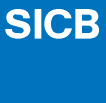 |
|
| Back to SICB '97 Spring Newsletter | |
| SICB Officers | |
SICB's Role in Re-Authorization of the Endangered Species Act
Fraser Shilling, Committee on Conservation ChairThe Endangered Species Act (1973) is up for re-authorization in the next few months and many people, organizations and corporations have lobbied for their interests to be considered. As scientists who study and/or know about animal species that may be at some risk of population decline or extinction, SICB members should voice their concerns. The mechanism for doing this is often not clear. Direct lobbying of congressional representatives is one way. SICB President Alan Kohn and Past-President Mike Hadfield have chosen another way. Between the two of them and myself, a letter was drafted to presidents and past-presidents of 22 societies asking for participation in an inter-Society review of the ESA re-authorization. A draft list of recommendations was sent along with the letter. The major points from this list are included below in roughly the order that they occur in the ESA itself.
"We, the undersigned Presidents, President-Elects, and Past-Presidents of scientific Societies, represent over 100,000 scientists around the country and the world. We present to the Executive and Congressional branches of the federal government the following requirements for re-authorizing the Endangered Species Act (1973) based on biological constraints. The majority of the public has indicated their desire for a strong ESA, the following statements provide for their wishes.
- The Act must prohibit further human-caused extinction of species within the United States of America and its domain of influence.
- The purpose of the Endangered Species Act is to provide containment measures for human actions that could threaten extinction of a species or extirpation of a population of a species.
- The federal government must declare and describe the critical habitat for threatened and endangered species at the time of listing.
- Recovery must be a priority of the ESA and the agencies whose duty it is to enforce it. To this end, the federal government must design, fund and implement recovery plans for listed species within three months of listing.
- Implemented recovery plans must provide for: a) a recovery area sufficient to absorb 100 percent of the projected population(s) size at recovery; and b) population projections and goals based upon best available scientific information should be established in the original plan.
- The federal government shall cooperate with state, county and municipal governing bodies to ensure that no action preempts the containment nature of the Act.
- No private or public agency action may negatively modify habitat occupied by threatened, endangered or candidate species or habitat within the recovery area designated by a recovery plan.
- In keeping with the spirit of the Convention on International Trade in Endangered Species of Wild Fauna and Flora (1973), the federal government shall prohibit trade with any country found to allow the collection, selling, importing or exporting of threatened or endangered species (in any form) through regulated trade or insufficient regulation.
- No listed or candidate species, or parts thereof, may be imported to, or exported from, the United States of America or its protectorates.
- Harming of listed species through the "incidental take" process is prohibited because it is considered to be inconsistent with the recovery of listed species.
- There will be no economic considerations or "cost-benefit analyses" associated with listing decisions, critical habitat designation, jeopardy determinations, or recovery plan development and implementation. These decisions will be based on the best scientific information only."
Even with cooperation among the presidents of scientific societies to help develop a strong ESA, it is still incumbent upon all of us to provide our own special expertise. This is a rare and critical opportunity to reduce the rate of human-caused extinction, SICB and member-biologists should use it.
The Society for Integrative and Comparative Biology
1313 Dolley Madison Blvd Suite 402
McLean VA 22101
Phone: 703-790-1745 or 800-955-1236
FAX: 703-790-2672
E-mail: SICB@BurkInc.com